Making Sense of a Fertilizer Label
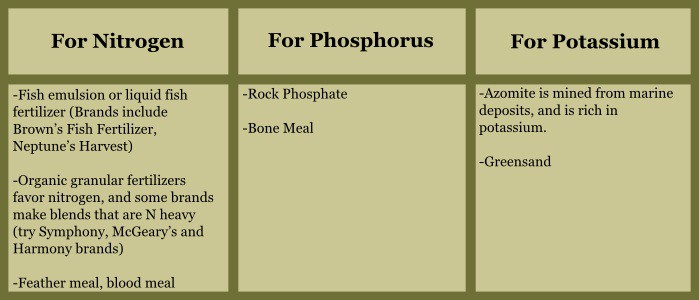
You want to make sure your Plumeria are getting the nutrition they need, but there are so many choices when it comes to selecting fertilizer. How do you know what is really in the bag? There are certain rules that all fertilizer makers must follow when they label their products and understanding these rules can make comparing fertilizers much easier.
Major Ingredients: Most commercial fertilizers have 3 numbers on the front label, separated by dashes. For example: 11-11-13. This is the fertilizer analysis or percentage by weight of the 3 major nutrients plants need: nitrogen, phosphorus and potassium, in that order. These are abbreviated as N-P-K.
So if you purchased a 11 pound bag of fertilizer labeled 11-11-13, it would contain 11% nitrogen, 11% phosphorus and 13% potassium. The remaining 65% could be comprised of other nutrients and filler.
- 1st Number = Nitrogen: The first number gives the concentration of nitrogen in the product. Nitrogen encourages foliage growth, among other benefits. A 11-11-13 fertilizer would contain 11% nitrogen by weight. So for every pound of fertilizer applied there is really only .11 pounds of nitrogen. (The 10 pound bag mentioned above would contain 1.1 lb. nitrogen.)
- 2nd Number = Phosphorous: The middle number refers to the concentration of phosphorous. Phosphorous contributes to many fundamental plant processes such as rooting and setting flower buds. A 11-11-13 fertilizer would contain 11% phosphorous by weight or 1.1 pounds of phosphorous. (The 10 pound bag mentioned above would contain 1.1 lb. of phosphorus.)
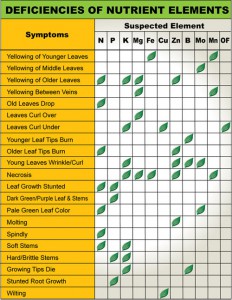
A good reference to get an idea if your Plumeria are Deficient in Nutrients - 3rd Number = Potassium: The final number states the concentration of potassium. Potassium contributes to the overall health and vigor of plants. Again, a 11-11-13 fertilizer would contain 13% potassium by weight or 1.3 pounds of potassium. (The 10 pound bag mentioned above would contain 1.3 lb. potassium.)
Complete Fertilizers: Fertilizers that contain all three major nutrients are considered complete fertilizers. There are specialized fertilizers which are called incomplete because they lack one or more major nutrients such as a fertilizer labeled 0-20-20.
Fertilizer Ratio (An easier comparison): An easier way to compare the numbers is to break them down to the fertilizer ratio or the amounts of the 3 major nutrients in relation to each other. A 5-10-5 fertilizer has a ratio of 1-2-1. This becomes important when looking for a fertilizer for a specific need. A 1-2-1 ratio is often recommended for vegetables, which need plenty of phosphorous to set fruit. 1-2-1 could be 5-10-5, 10-20-10 or any similar extrapolation.
Other Ingredients: Any additional ingredients will be listed on the side label. This may include other nutrients like calcium, magnesium, iron, micronutrients and even the percentage of organic matter.
Organic fertilizers: Organic fertilizers must specify which nutrient(s) is organic and it must be identified as either synthetic and/or natural, by percentage. For example: 20% of Nitrogen organic (6% synthetic, 14% organic). When something is labeled “organic”, it simply means it contains carbon atoms. However we have come to expect that organic fertilizer, like organic food, comes from natural processes and contains nothing synthetic. That tends to be the case, especially as consumers become more educated, but be sure to read the label before you make a purchase.
Tips:
- Having a soil test done before you start adding amendments will tell you what you actually need. If your soil pH is too high or too low, your plants will not be able to access some nutrients, even if they are present in the soil.
- There is no one size fits all fertilizer. Fertilizer choice depends on the type of plant being grown and the soil it is being grown in.
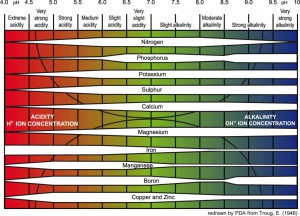
If your PH is too high or too low you nutrients could be locked in the soil. - Always follow the label instructions when using any registered garden product. Just because a little is good, it doesn’t follow that a lot is better.
- You can use less of fertilizers with high analysis numbers than with lower numbers. Five pounds of 10-20-10 would give you the same nutrient value as 10 pounds of 5-10-5.
- Organic fertilizers made from natural ingredients often have lower concentrations of the three major nutrients, so you will need to use larger amounts. However, they do contain many other nutrients that feed both the plant and the soil. If you are using a synthetic fertilizer, you should supplement with some type of organic matter such as compost or manure, to maintain soil health.
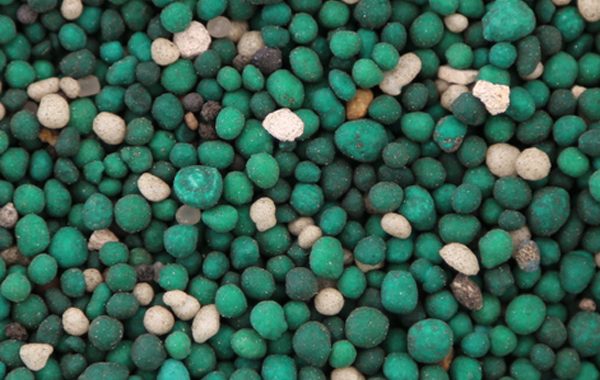 Fertilizer Basics
Fertilizer Basics  Planning your Plumeria Seasonal Care Regimen
Planning your Plumeria Seasonal Care Regimen  Understanding Plumeria’s Seasonal Cycles
Understanding Plumeria’s Seasonal Cycles  Why are Plumeria Seedlings so Different?
Why are Plumeria Seedlings so Different? 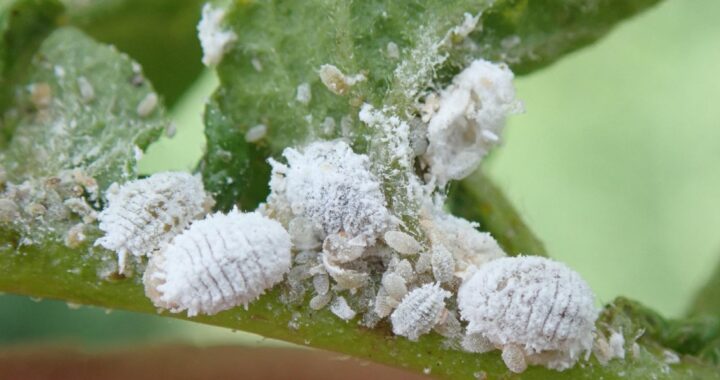 Mealy Bugs Plumeria Pests
Mealy Bugs Plumeria Pests